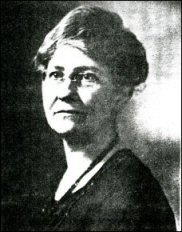|
 |
|
 |
Wednesday, November 3, 1948
The four Northern New York counties—Jefferson, St. Lawrence, Lewis and Oswego—were settled about the same time, in 1796. This was probably owing to the fact that there were three well defined trails leading into them. One, and the most interesting to us along the big river, led across Lake Champlain, through the Chateaugay woods into this county. Hardy Vermonters and some from New Hampshire piled their worldly goods onto oxen and wood sleds, crossed the lake, often in the winter as frozen lakes and rivers were easier to traverse—no roads at that time being in existence—followed Indian trails, and slept in such shanties as they ran across and came thus to Hopkinton, Parishville, Madrid or Lisbon.
No doubt they had read or heard of the following notice which had appeared in various publications in June, 1787: Ten Townships of unappropriated lands on the southeast side of the River St. Lawrence will be sold at public vendue at the Coffee House in New York. The sale was to commence on Tuesday, the 10th of July, at 11 o'clock in the forenoon. (Signed) Simeon Dewitt, Attorney General. The principal purchaser of the advertised lands was one Alexander Macomb, a fur trader residing in Detroit, who had become familiar with this county during his trading trips on the St. Lawrence River. For this county had long been known as a fur country even before settlement had begun. Within the great forest lived the wolf, fox, bear, skunk, squirrel and around the streams the beaver, mink, musk-rat and otter. So on Jan. 10, 1792 Macomb and Daniel McCormick purchased Great Tracts No. 1 to 6, Parishville being No. 2. The price was 16 and four ninths cents per acre. Valuable, weren't we? You have seen, no doubt, in old deeds references to "Macomb's purchase, Great Tract No. 2" etc. Perhaps you have such a one of your own. However, Macomb failed in 1792 and the lands passed to Mr. McCormick who sold them to William Constable. The latter owned large tracts in Lewis County and was an important personage there. His family had erected beautiful Constable Hall on their domain which was presented to Lewis County a short time ago as an historical museum. Would that some one would perform this fine civic act for St. Lawrence County as we have a newly organized Historical Society and hence already collected many interesting historical items. Speaking of William Constable, this writer has an old deer dated June 15, 1837 signed by John Constable and wife.
But to return to the sale of Parishville, James D. Leray bought the tract from Constable on July 29, 1804, who sold the same to David Parish Dec. 2, 1808. So at last we have the beginnings of this town.
|